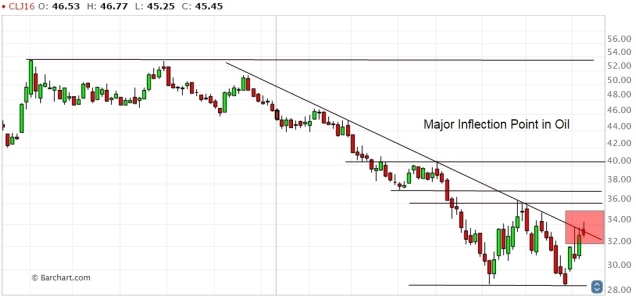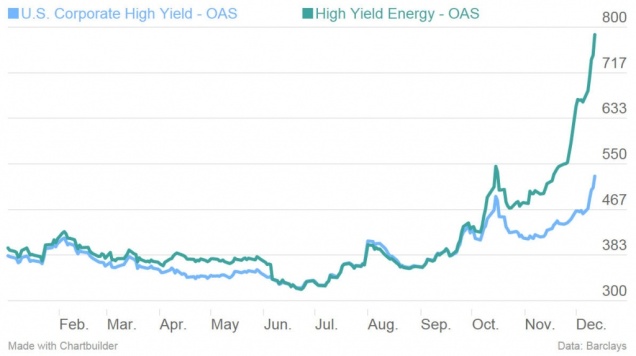A brief guide to the battered energy complex and the clues to look for before buying.

Oil has been even more important than usual in the past few months for financial markets. Slowing demand growth, rising U.S. production, and cyclical issues in emerging markets lead to a persistent supply glut (thanks to Saudi tactics at least in part) and pushed prices down by more than 70%.
The decline caused bankruptcy fears (not unfounded ones) concerning over-leveraged and borderline unsustainable producers with some analysts expecting as much as one-third of the O&G complex going bust.
After dipping below $30, for a 13-year low, WTI is possibly building a durable bottom amid the horrible sentiment. Recent news on the agreement between Saudi-Arabia and Russia on freezing production propelled oil higher and although it’s hard to imagine that these nations will keep their promises, this could be a good “excuse” for the market to stage a meaningful rally.

Yields of lower quality bonds (as seen above) in the sector skyrocketed with some contagion to other industries as well. Coupled with the global slowdown in economic growth (and the new Bail-in directive in Europe) banks and other financials also got sold as the exposures and the long-term consequences could jeopardize profitability in the highly leveraged financial system of the post-crisis era.
Common sense would tell us that falling oil prices are good for most of the economies and consumers. How come that it still can lead to a crisis in confidence worldwide?
Let’s take look at the most relevant effects of the slump: Continue reading